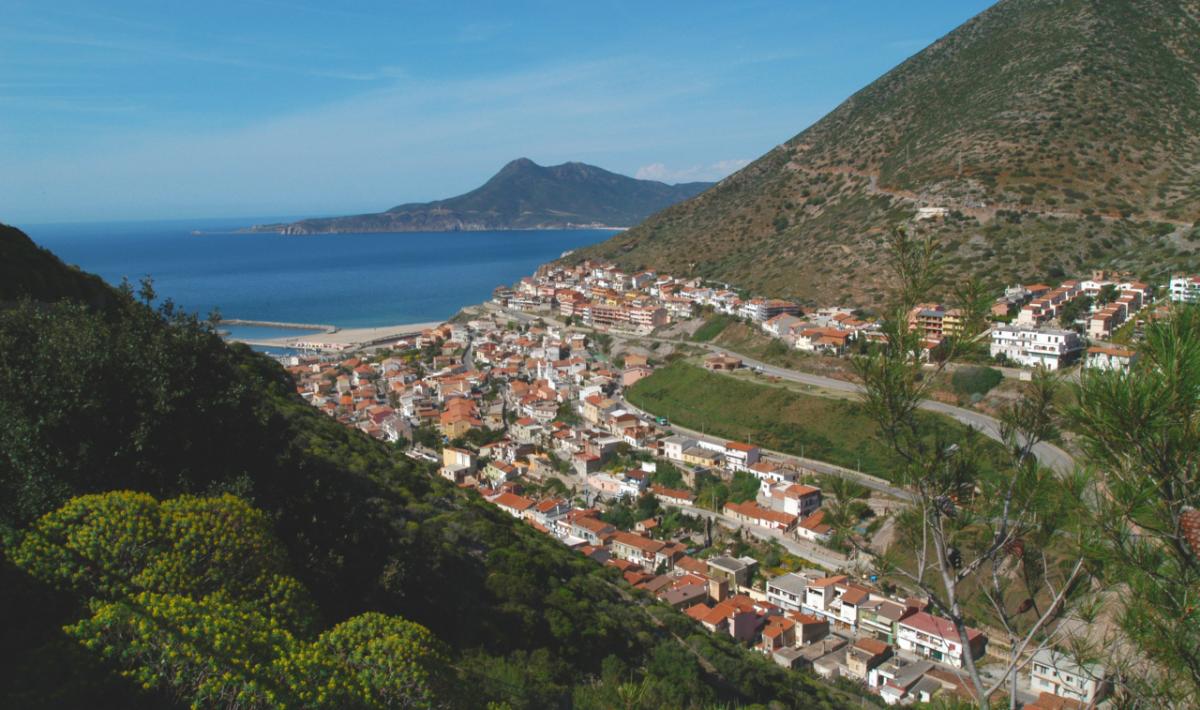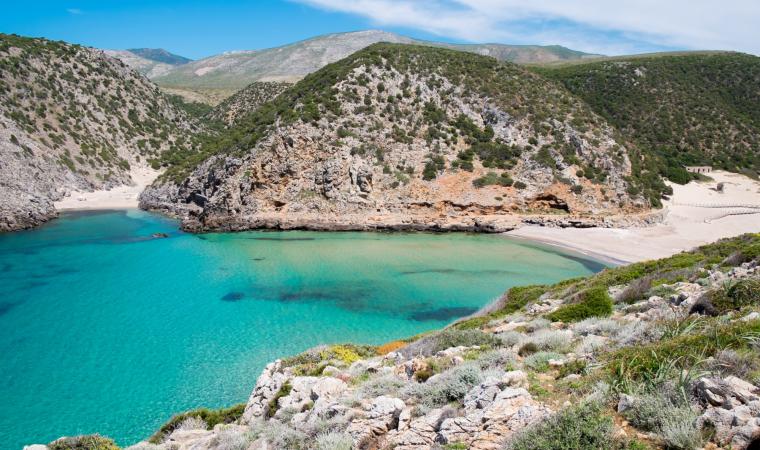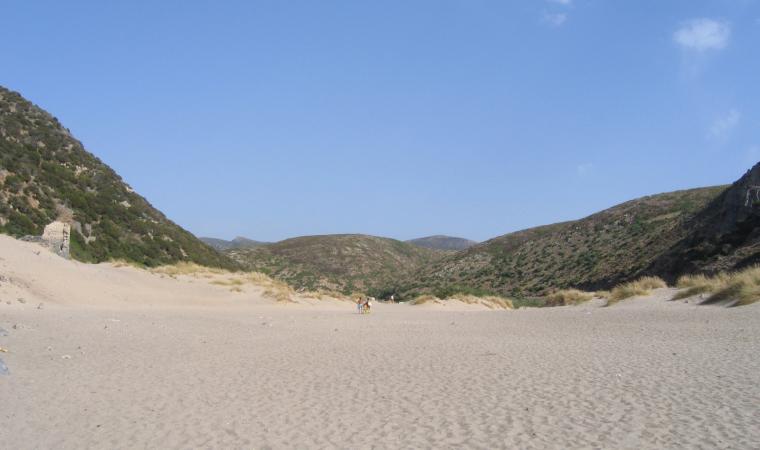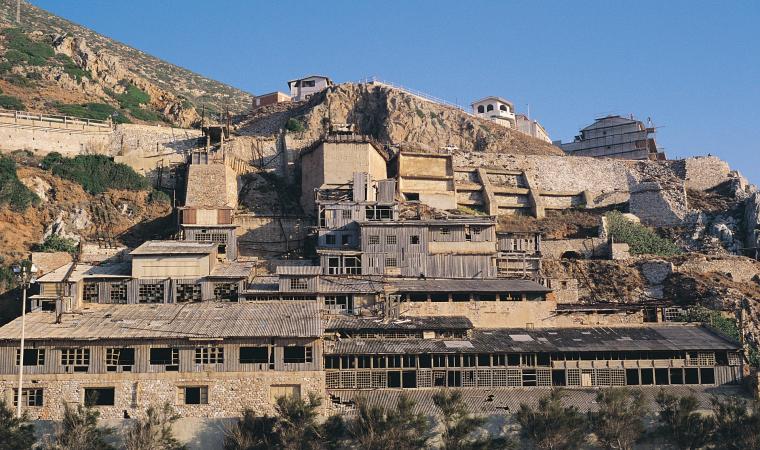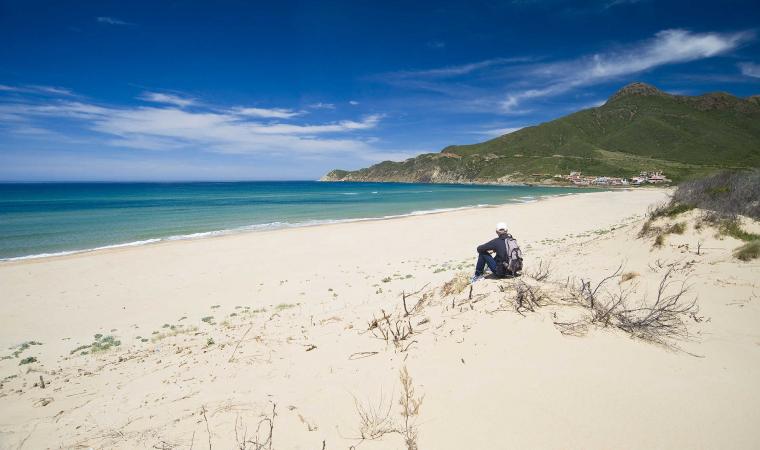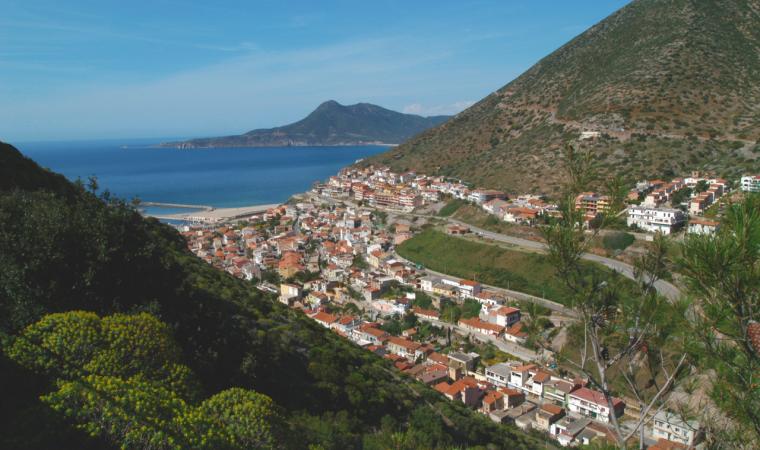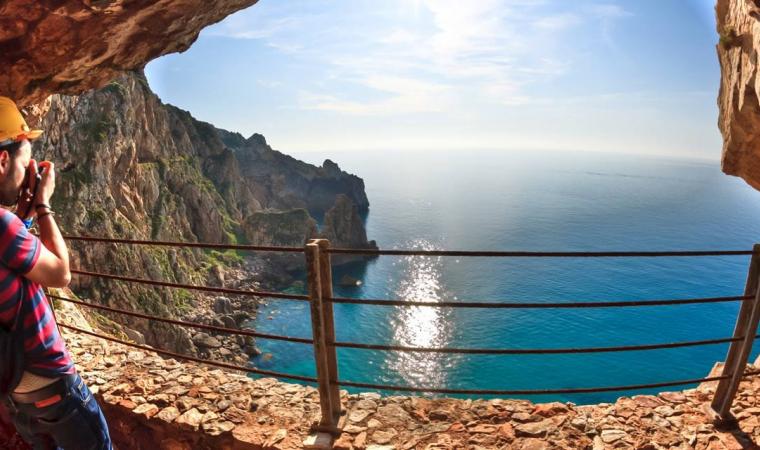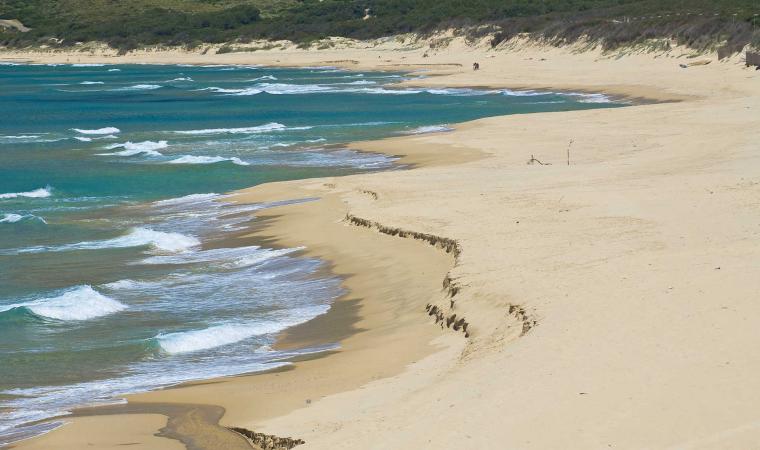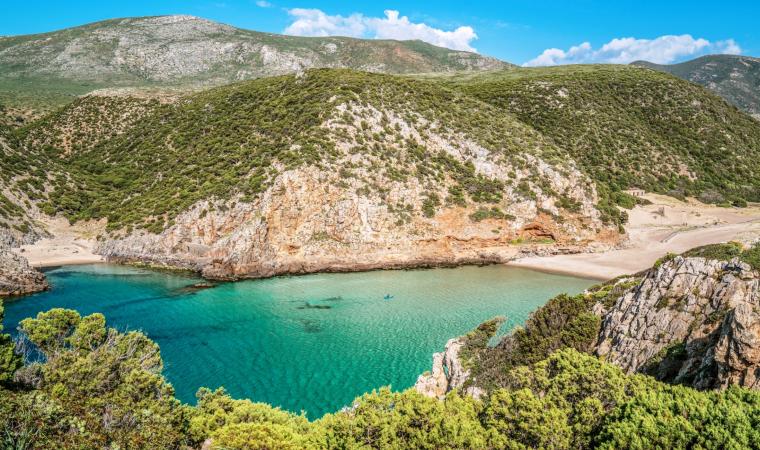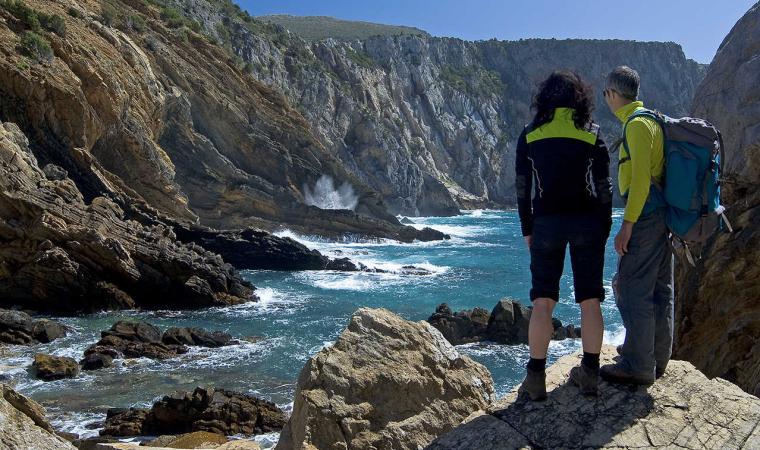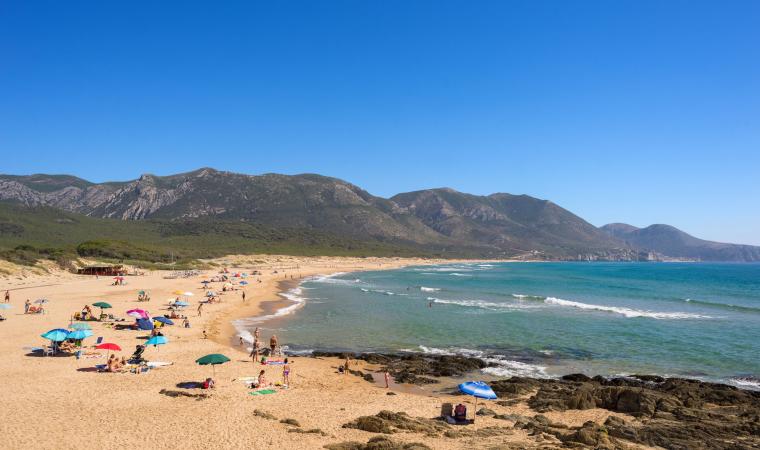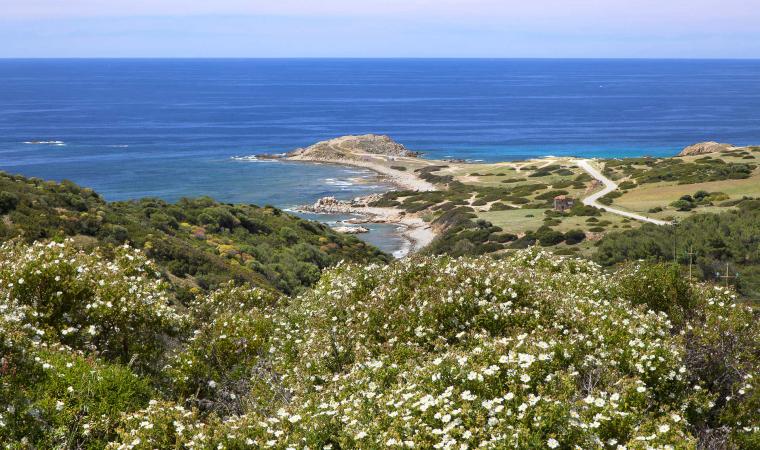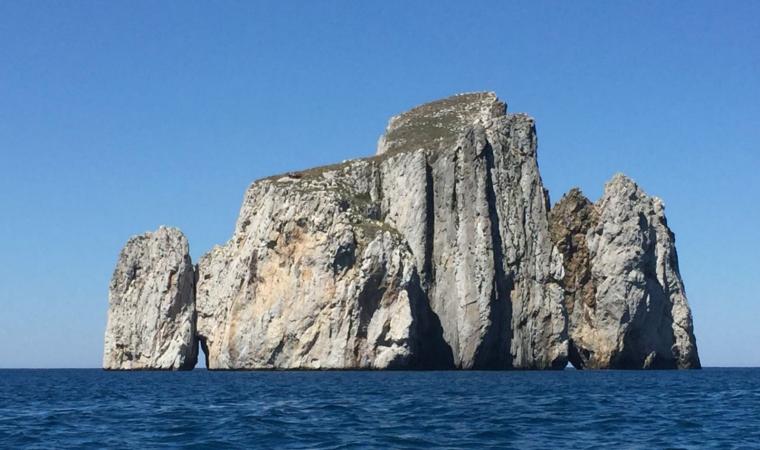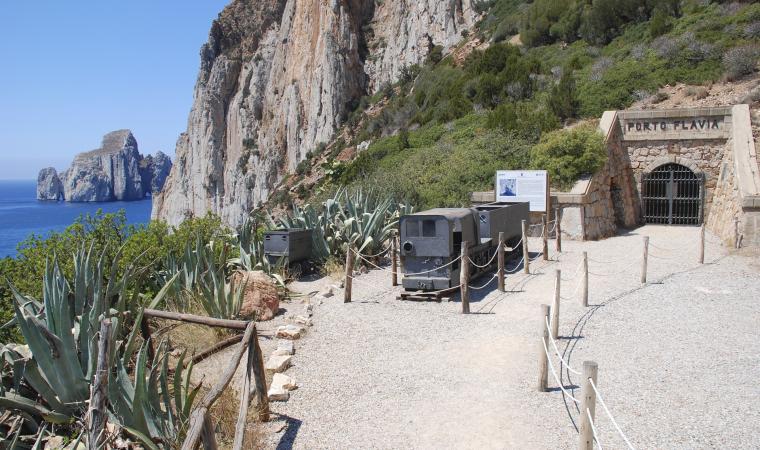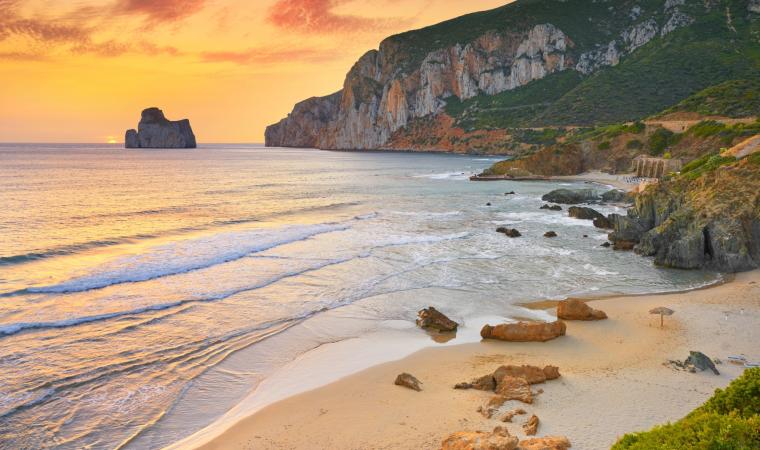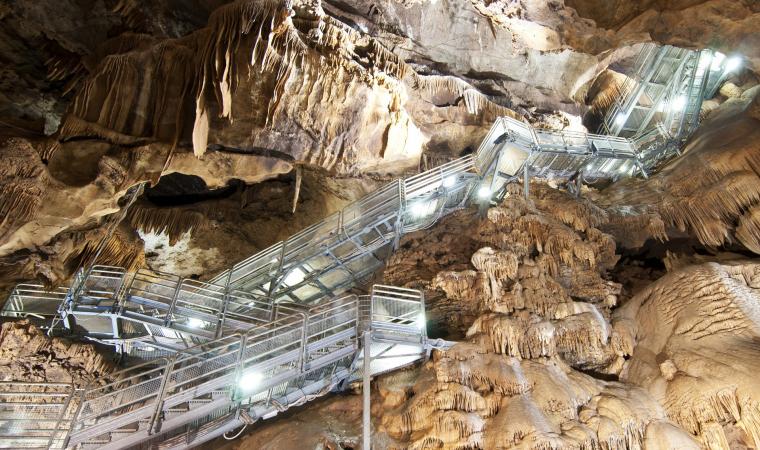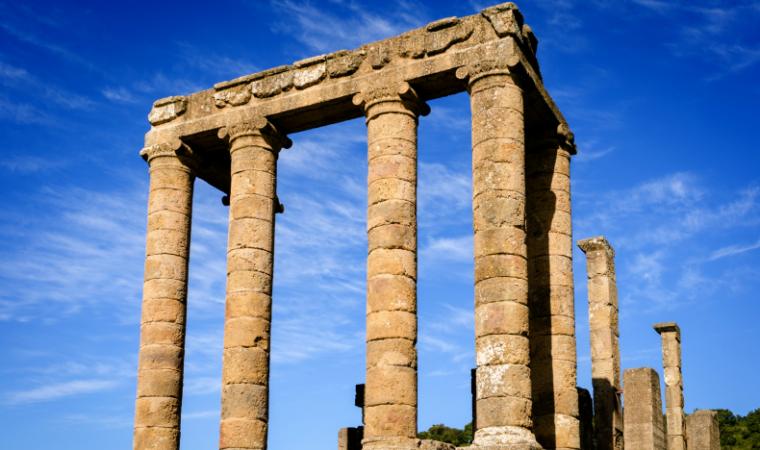Here a scenario of industrial archaeology looks out over the gorgeous shoreline. Buggerru came about as a mining town in 1864. Today it is a tourism hub with about a thousand inhabitants, one fifth of what it had been a hundred years ago. The town centres around the church of San Giovanni Battista and its houses fan out over the scenic opening towards the sea of the valley of Mt. Caitas, the channel that lent its name to the Malfidano mine. It closed in 1979, but was a major enterprise in its heyday between the second half of the XIX century and the early XX century. In little over a century, Buggerru, already known for its silver by the Romans, produced more than a million tons of zinc and 200,000 tons of lead. A small modern port is located below the exit of the Galleria Henry, now an open air museum that at one time had a train laden with extracted minerals running through it. T

